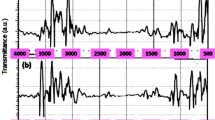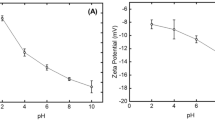Abstract
Dye-containing wastewater emerges in many fields, especially in the textile industry. This type of wastewater has to be treated because of its negative effects on the environment. The treatment of wastewater containing dyes employs a variety of treatment techniques. However, it is important to use treatment systems that use nanoparticles of biomaterial origin. In this study, the use of photocatalytic treatment system with hydrochar obtained from tomato stems (TS-HC) in the purification of Methylene Blue (MB) and Remazol Brilliant Blue R (RBBR) dyes was investigated. For the optimization of the photocatalytic treatment system, light source, pH, TS-HC amount and initial dye concentration were tested. Furthermore, TS-HC reuse tests were carried out at the found optimal conditions and it was determined that both dyes had 10 reuse cycles. Optimum conditions for MB dye was obtained by adding 1 g/L catalyst into the solution with a pH value of 8 and an initial concentration of 15 mg/L, and 100% dye removal efficiency under UVA light. 97.4% dye removal efficiency was obtained by adding 2 g/L catalyst to the wastewater (pH 2) containing 15 mg/L RBBR dye under UVA light. Characterization analyzes with SEM, EDX and XRD of hydrochar obtained from waste tomato stem were performed. As a result of the photocatalytic experiments, TS-HC catalyst was used in the decolorization of real wastewater. It has been determined that the catalyst can decolorize the dye-containing real wastewater up to the lower limit of the appropriate value (260 Pt–Co) of the Turkish Water Pollution Control Regulation.
Article Highlights
-
Tomato stems hydrochar (TS-HC) was prepared and used for photocatalytic treatment system.
-
100% MB and 97.4% RBBR removal efficiency were obatined under UVA light.
-
TS-HC catalyst was also tested in the decolorization of real wastewater.










Similar content being viewed by others

Availability of Data and Materials
The datasets used and/or analyzed during the current study are available from the corresponding author on reasonable request.
References
Abdellah MH, Nosier SA, El-Shazly AH, Mubarak AA (2018) Photocatalytic decolorization of methylene blue using TiO2/UV system enhanced by air sparging. Alex Eng J 57(4):3727–3735
Begum S, Narwade VN, Halge DI, Jejurikar SM, Dadge JW, Muduli S, Bogle KA (2020) Remarkable photocatalytic degradation of Remazol Brilliant Blue R dye using bio-photocatalyst ‘nano-hydroxyapatite.’ Mater Res Expr 7(2):025013
Bouchareb R, Bilici Z, Dizge N (2022) Water recovery from yarn fabric dyeing wastewater using electrochemical oxidation and membrane processes. Water Environ Res 94(1):e1681
Chen Z, Jia H, Guo Y, Li Y, Liu Z (2022) Nitrogen-doped hydrochars from shrimp waste as visible-light photocatalysts: roles of nitrogen species. Environ Res 208:112695
El-Berry MF, Sadeek SA, Abdalla AM, Nassar MY (2021) Microwave-assisted fabrication of copper nanoparticles utilizing different counter ions: an efficient photocatalyst for photocatalytic degradation of safranin dye from aqueous media. Mater Res Bull 133:111048
Hasanpour M, Hatami M (2020) Photocatalytic performance of aerogels for organic dyes removal from wastewaters: review study. J Mol Liq 309:113094
He H, Zhang TC, Ouyang L, Yuan S (2022) Superwetting and photocatalytic Ag2O/TiO2@ CuC2O4 nanocomposite-coated mesh membranes for oil/water separation and soluble dye removal. Mater Today Chem 23:100717
Hussain T, Faisal S, Rizwan M, Zaman N, Iqbal M, Iqbal A, Ali Z (2022) Green synthesis and characterization of copper and nickel hybrid nanomaterials: Investigation of their biological and photocatalytic potential for the removal of organic crystal violet dye. J Saudi Chem Soc 26(4):101486
Isik Z, Saleh M, M’barek I, Yabalak E, Dizge N, Deepanraj B (2022) Investigation of the adsorption performance of cationic and anionic dyes using hydrochared waste human hair. Biomass Conv Biorefinery. https://doi.org/10.1007/s13399-022-02582-2
Islam A, Teo SH, Taufiq-Yap YH, Ng CH, Vo DVN, Ibrahim ML, Awual MR (2021) Step towards the sustainable toxic dyes removal and recycling from aqueous solution-a comprehensive review. Resour Conserv Recycl 175:105849
Jorfi S, Pourfadakari S, Kakavandi B (2018) A new approach in sono-photocatalytic degradation of recalcitrant textile wastewater using MgO@ Zeolite nanostructure under UVA irradiation. Chem Eng J 343:95–107
Lin Q, Zeng G, Yan G, Luo J, Cheng X, Zhao Z, Li H (2022) Self-cleaning photocatalytic MXene composite membrane for synergistically enhanced water treatment: oil/water separation and dyes removal. Chem Eng J 427:131668
Mphuthi LE, Erasmus E, Langner EH (2021) Metal exchange of ZIF-8 and ZIF-67 nanoparticles with Fe (II) for enhanced photocatalytic performance. ACS Omega 6(47):31632–31645
Naseri A, Asghari Sarabi G, Samadi M, Yousefi M, Ebrahimi M, Moshfegh AZ (2022) Recent advances on dual-functional photocatalytic systems for combined removal of hazardous water pollutants and energy generation. Res Chem Intermed. https://doi.org/10.1007/s11164-022-04677-x
Noori S, Ghorbani-Vaghei R, Azadbakht R, Karamshahi Z, Koolivand M (2022) Graphene-oxide/schiff base N2O4 ligand-palladium: a new catalyst for the synthesis of furan derivatives. J Mol Struct 1250:131849
Pai S, Kini MS, Selvaraj R (2021) A review on adsorptive removal of dyes from wastewater by hydroxyapatite nanocomposites. Environ Sci Pollut Res 28(10):11835–11849
Rafiq A, Ikram M, Ali S, Niaz F, Khan M, Khan Q, Maqbool M (2021) Photocatalytic degradation of dyes using semiconductor photocatalysts to clean industrial water pollution. J Ind Eng Chem 97:111–128
Ren Y, Liu X, Li H, Wang X, Jing X (2022) Synthesis and visible light photocatalytic performance of HC/BiOBr/Bi12TiO20 microspheres. Chem Phys Lett 797:139584
Ruscasso F, Cavello I, Curutchet G, Cavalitto S (2022) Antarctic yeasts: potential use in a biologic treatment of textile azo dyes. Bioresour BioprocesS 9(1):1–12
Shathy RA, Fahim SA, Sarker M, Quddus MS, Moniruzzaman M, Masum SM, Molla MAI (2022) Natural sunlight driven photocatalytic removal of toxic textile dyes in water using B-doped ZnO/TiO2 nanocomposites. Catalysts 12(3):308
Sibhatu AK, Weldegebrieal GK, Imteyaz S, Sagadevan S, Tran NN (2022a) Synthesis and process parametric effects on the photocatalyst efficiency of CuO nanostructures for decontamination of toxic heavy metal ions. Chem Eng Process 173:108814
Sibhatu AK, Weldegebrieal GK, Sagadevan S, Tran NN, Hessel V (2022b) Photocatalytic activity of CuO nanoparticles for organic and inorganic pollutants removal in wastewater remediation. Chemosphere 300:134623
Siong VLE, Lee KM, Juan JC, Lai CW, Tai XH, Khe CS (2019) Removal of methylene blue dye by solvothermally reduced graphene oxide: a metal-free adsorption and photodegradation method. RSC Adv 9(64):37686–37695
Soh EY, Lim SS, Chew KW, Phuang XW, Ho VM, Chu KY, Tiong TJ (2022) Valorization of spent brewery yeast biosorbent with sonication-assisted adsorption for dye removal in wastewater treatment. Environ Res 204:112385
Sridhar A, Ponnuchamy M, Kapoor A, Prabhakar S (2022) Valorization of food waste as adsorbents for toxic dye removal from contaminated waters: a review. J Hazard Mater 424:127432
Su F, Peng H, Yin H, Luo C, Zhu L, Zhong W, Yin D (2021) Biowaste-derived hydrochar microspheres: realizing metal-free visible-light photocatalytic oxidation of amines. J Catal 404:149–162
Tomasini E, Siracusano G, Maier MS (2012) Spectroscopic, morphological and chemical characterization of historic pigments based on carbon. Paths for the identification of an artistic pigment. Microchem J 102:28–37
Turkish Water Pollution Control Regulation (TWPCR) (2008) The regulation of water pollution control. Ministry of environment and forestry. Official newspaper, (31.12.2004) No: 25687.
Valadez-Renteria E, Oliva J, Rodriguez-Gonzalez V (2022) Photocatalytic materials immobilized on recycled supports and their role in the degradation of water contaminants: a timely review. Sci Total Environ 807:150820
Vatanpour V, Khadem SSM, Dehqan A, Al-Naqshabandi MA, Ganjali MR, Hassani SS, Dizge N (2021) Efficient removal of dyes and proteins by nitrogen-doped porous graphene blended polyethersulfone nanocomposite membranes. Chemosphere 263:127892
Wang G, Liu J, Lei M, Zhang W, Zhu G (2020) Optimizing the substrate pre-heating and post-annealing temperatures for fabricating high-performance carbon-based CsPbIBr 2 inorganic perovskite solar cells. Electrochim Acta 349:136354
Wang S, Gao H, Fang L, Hu Q, Sun G, Chen X, Yang H (2021) Synthesis of novel CQDs/CeO2/SrFe12O19 magnetic separation photocatalysts and synergic adsorption-photocatalytic degradation effect for methylene blue dye removal. Chem Eng J Adv 6:100089
Yabalak E, Könen Adiguzel S, Adiguzel AO, Ergene RS, Tuncer M, Gizir AM (2017) Application of response surface methodology for the optimization of oxacillin degradation by subcritical water oxidation using H2O2: genotoxicity and antimicrobial activity analysis of treated samples. Desalin Water Treat 81:186–198
Yabalak E, Elneccar F (2022) Evaluation of watermelon peel, banana peel and bay leaves hydrochars as green catalysts in the degradation of malachite green by thermally activated persulfate oxidation method. J Environ Manage 304:114311
Yang X, Lu-ming H, Zhao-hui C (2014) Degradation of CVD-SiC coated PIP-C/SiC composites exposed to the hot firing test based on MMH/N2O4 bipropellants. Ceram Int 40(7):10303–10308
Yu F, Tian F, Zou H, Ye Z, Peng C, Huang J, Gao B (2021) ZnO/biochar nanocomposites via solvent free ball milling for enhanced adsorption and photocatalytic degradation of methylene blue. J Hazard Mater 415:125511
Funding
There is no funding.
Author information
Authors and Affiliations
Contributions
AA, OE, and MG: performed methodology and data curation. EY and HA: performed investigation and writing—original draft. EY and ND: performed conceptualization, writing—original draft, formal analysis, and review & editing. All authors read and approved the final manuscript.
Corresponding author
Ethics declarations
Conflict of Interest
The authors declare that they have no competing interests.
Ethics Approval and Consent to Participate
Not applicable.
Consent for Publication
Not applicable.
Rights and permissions
Springer Nature or its licensor holds exclusive rights to this article under a publishing agreement with the author(s) or other rightsholder(s); author self-archiving of the accepted manuscript version of this article is solely governed by the terms of such publishing agreement and applicable law.
About this article
Cite this article
Alterkaoui, A., Eskikaya, O., Gün, M. et al. Production of Waste Tomato Stem Hydrochar (TS-HC) in Subcritical Water Medium and Application in Real Textile Wastewater using Photocatalytic Treatment System. Int J Environ Res 16, 110 (2022). https://doi.org/10.1007/s41742-022-00483-w
Received:
Revised:
Accepted:
Published:
DOI: https://doi.org/10.1007/s41742-022-00483-w



